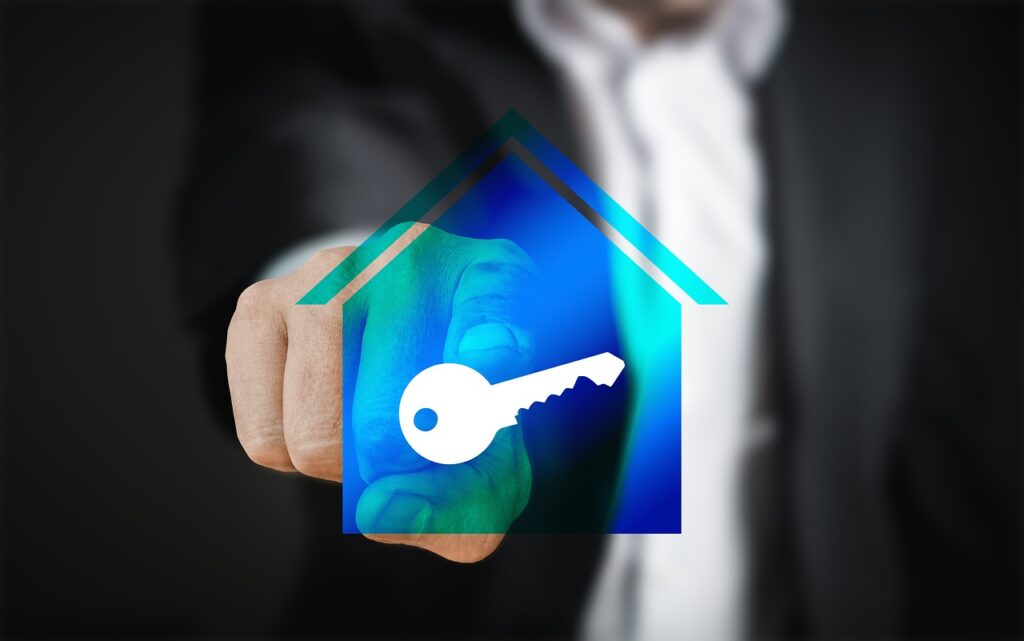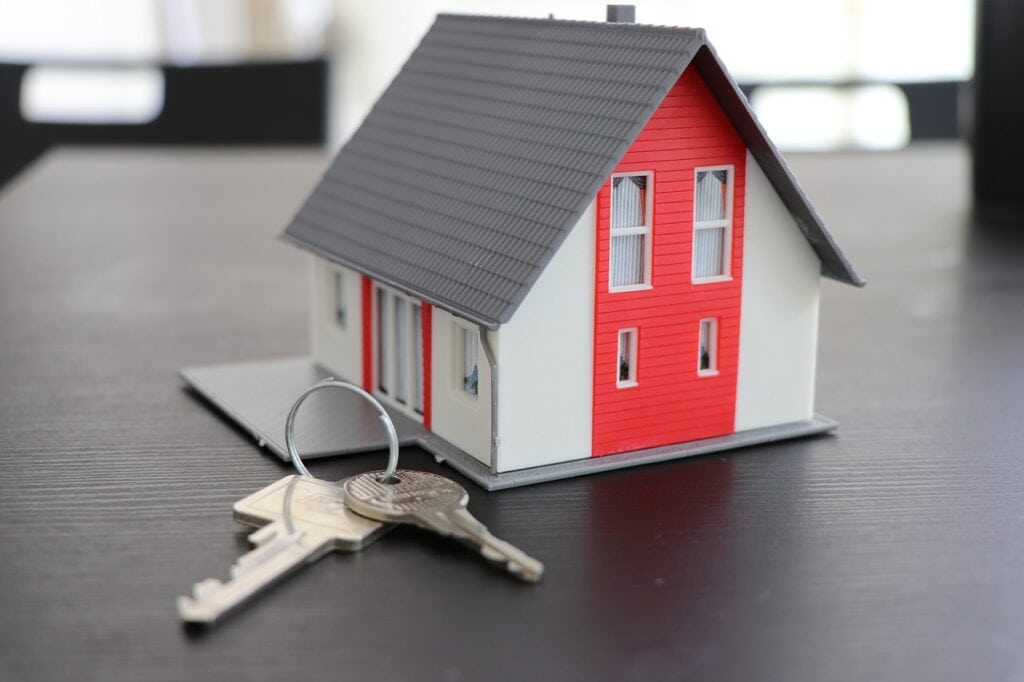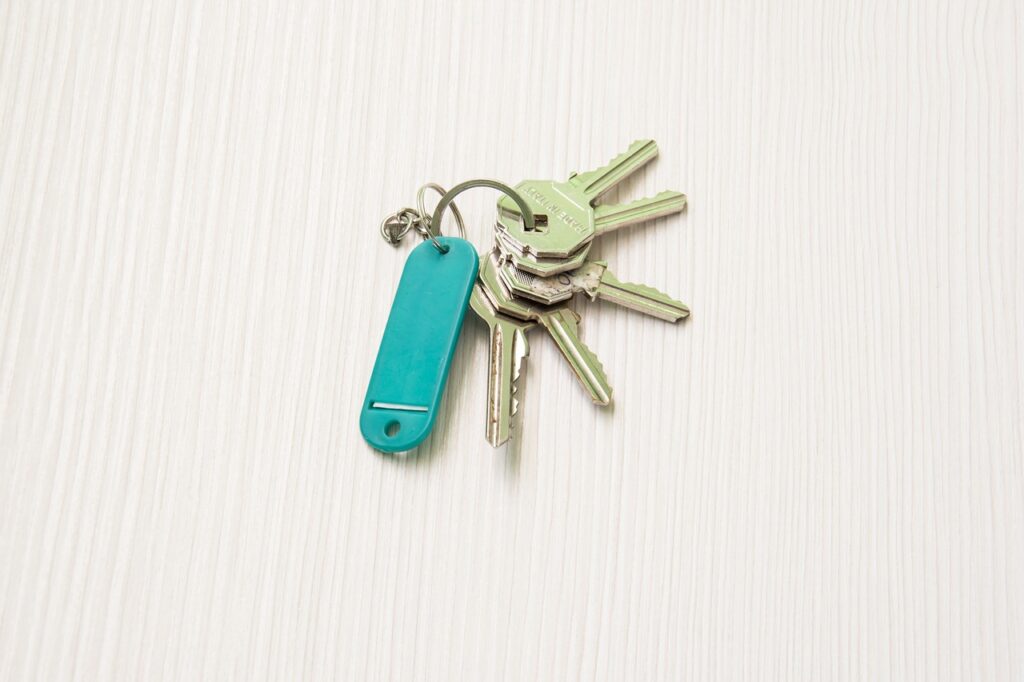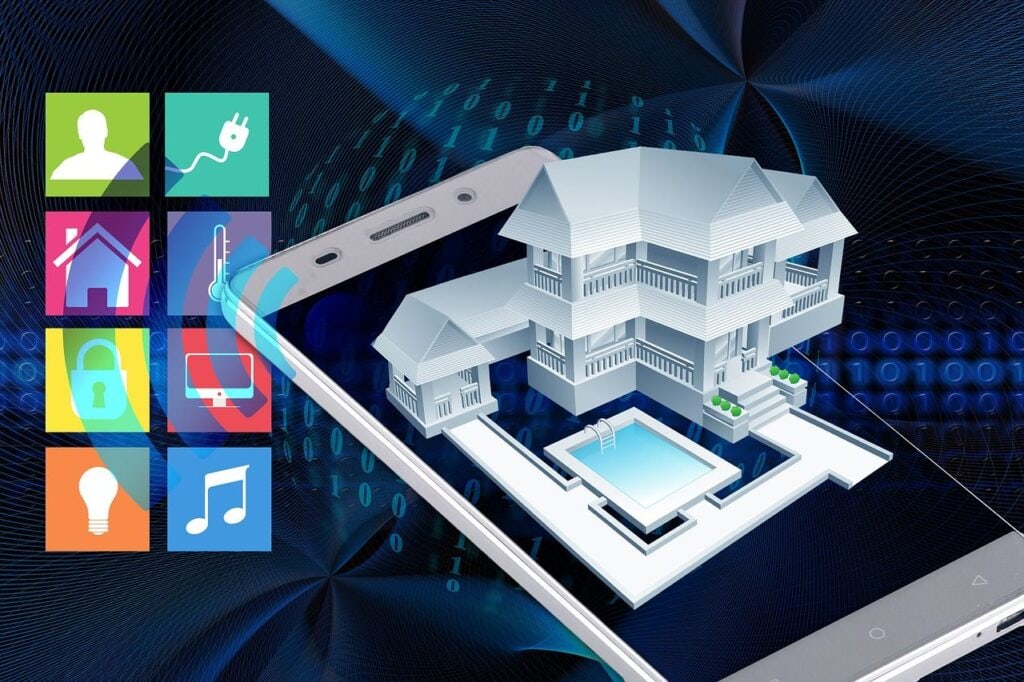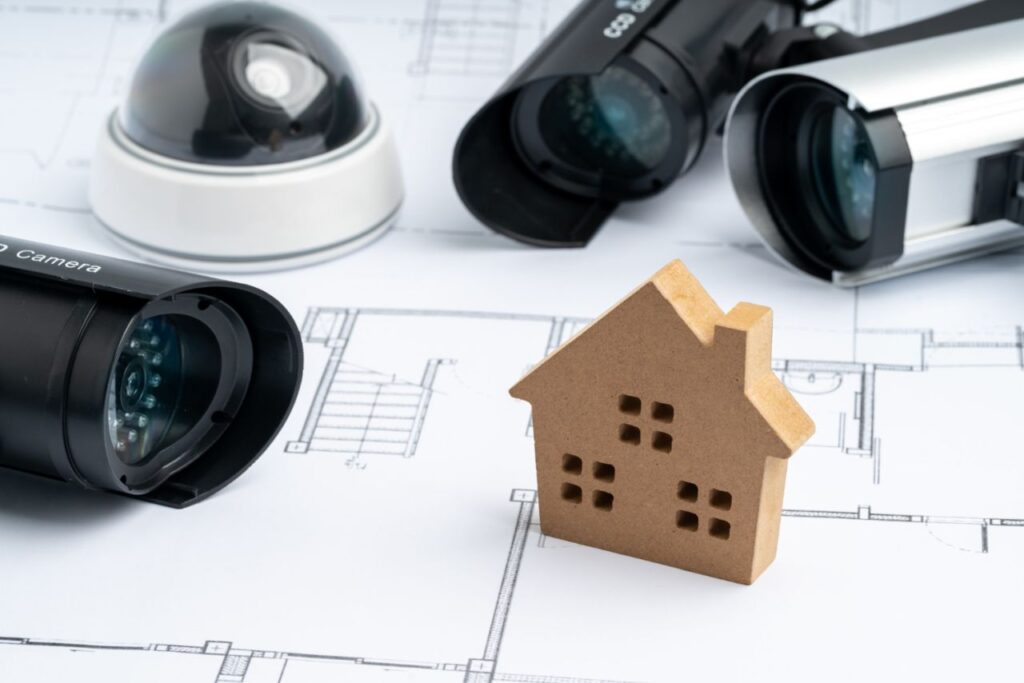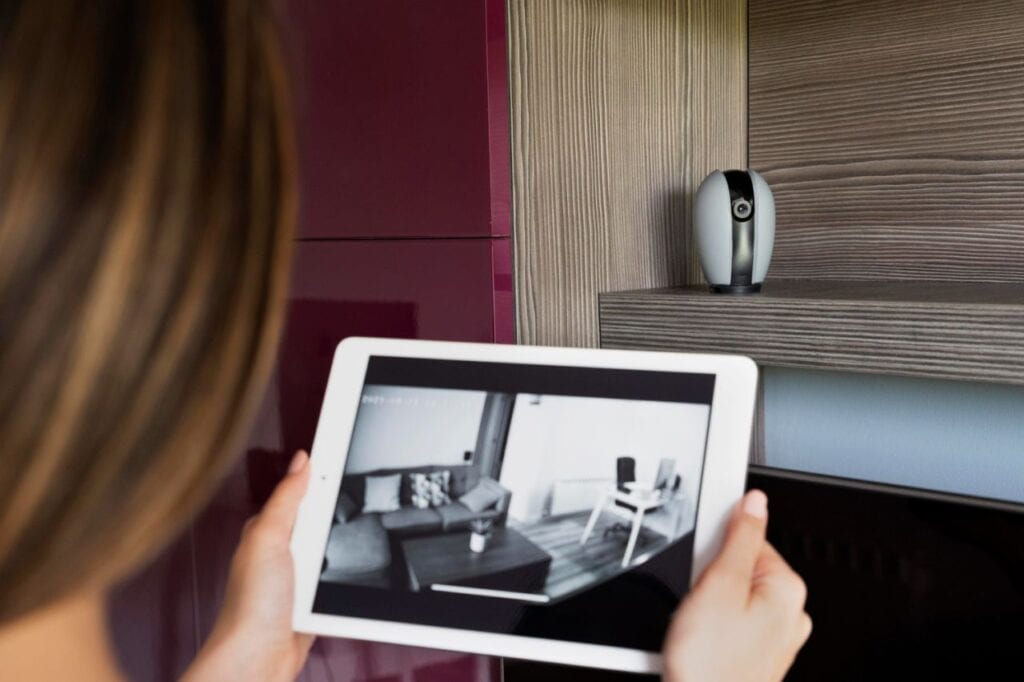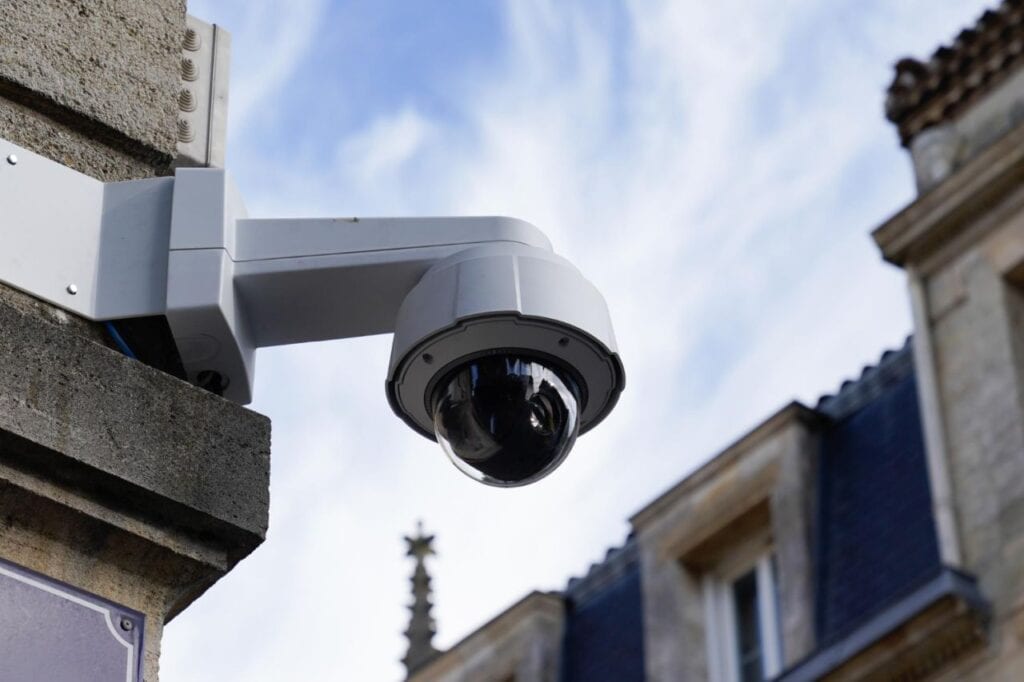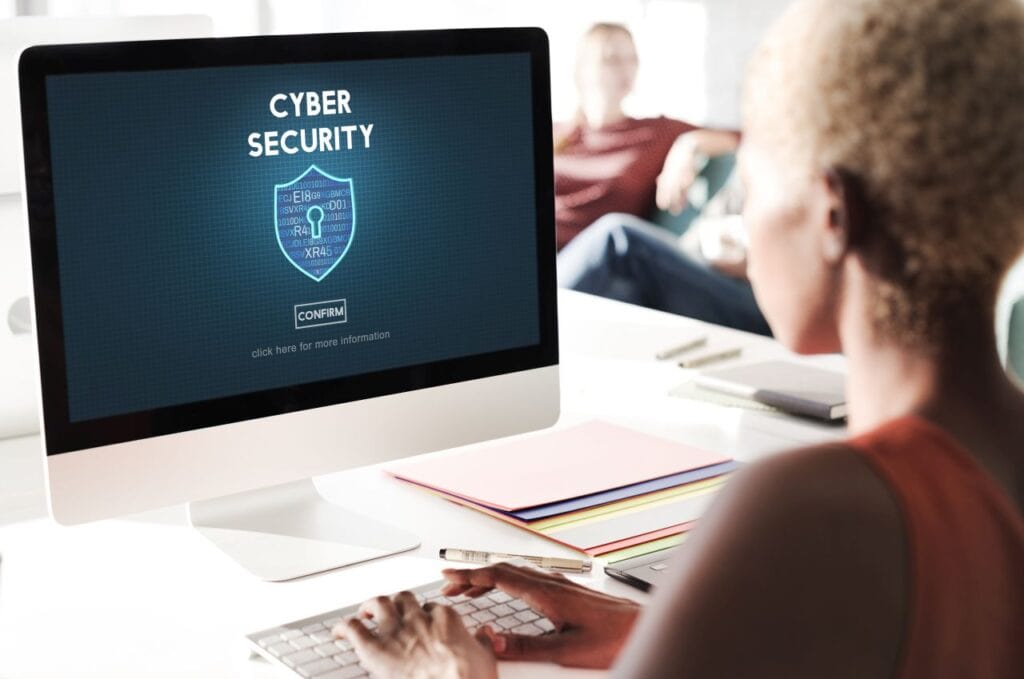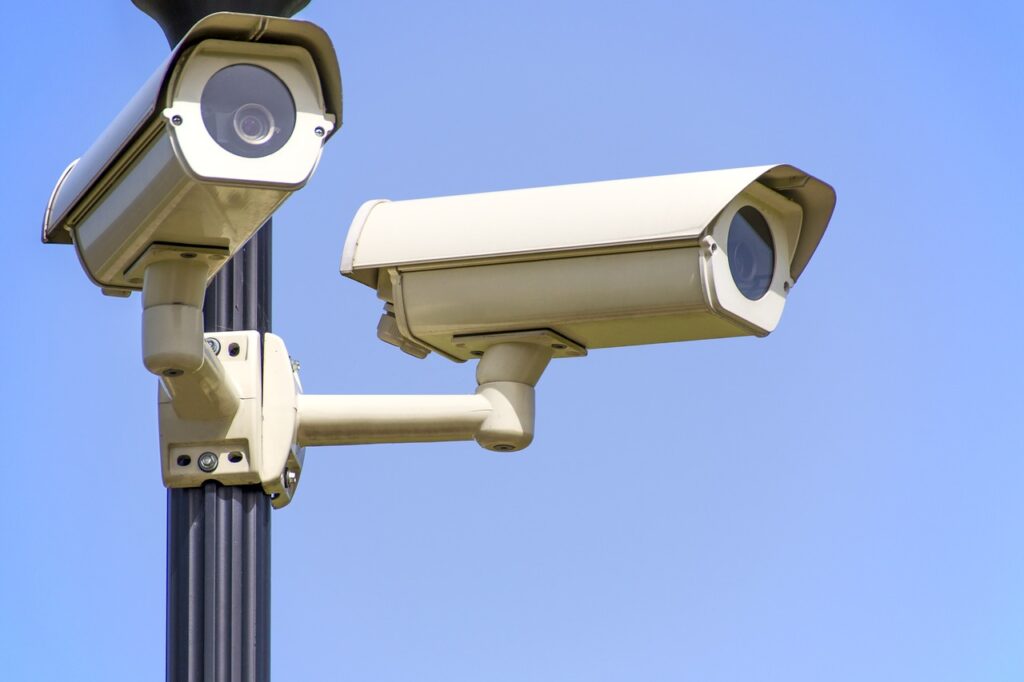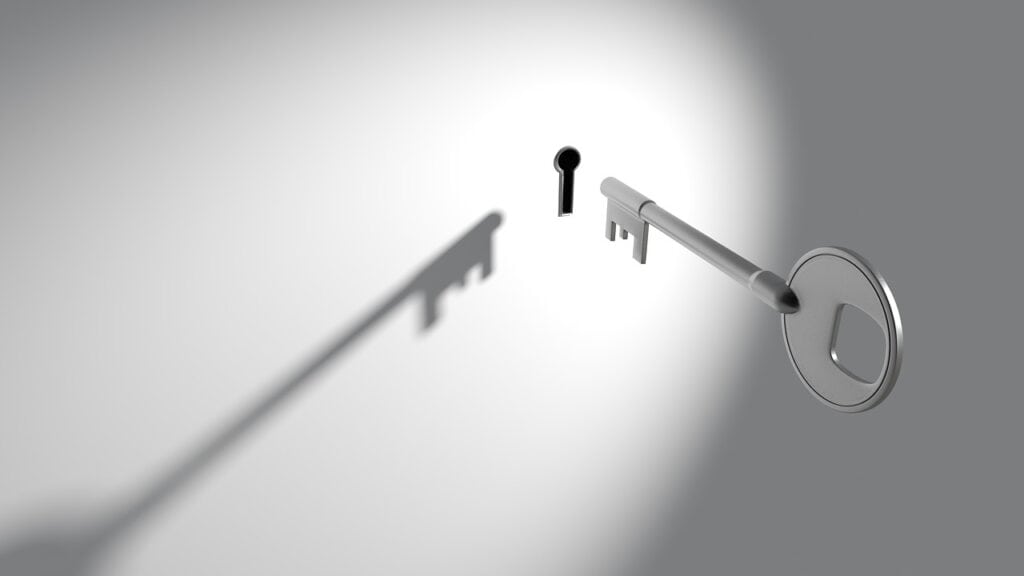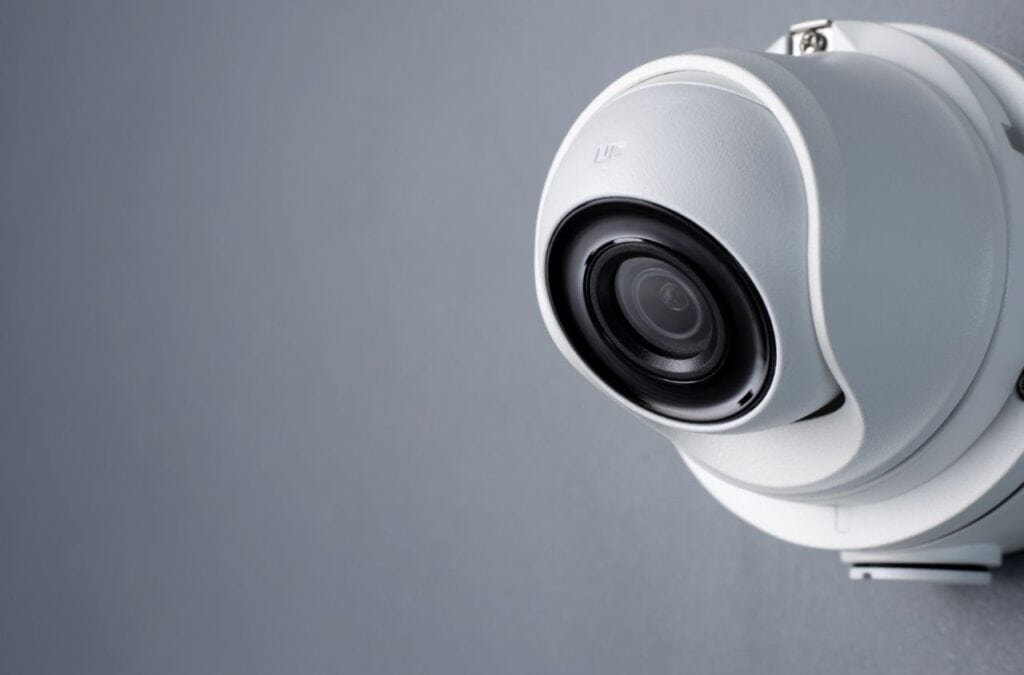Do you worry about the security of your house? Installing a smart home security system can help you save money on your monthly costs and give you peace of mind about the safety of your family. This article will provide you an outline of building a high-tech home security system and will teach you some tactics you probably don't know about yet.
Some consumers may feel intimidated by the prospect of investing in "smart" home security gadgets because they believe it will be too time-consuming or costly. Sadly, this is a prevalent misunderstanding among buyers. A smart home system does not require extensive home improvements, a large number of individual components, or a lot of your free time to set up.
What you need to turn your home into a smart home depends on your lifestyle, the goals you have for your home security system, and the speed of life in your household. Worrying about your home’s security? Then Defend Security Group home security Melbourne is the right choice!
Security Systems that Adapt to Your Home's Unique Needs
When installing a smart home security system, you may find that different areas of your home have different specifications. If you want to get a head start on designing your home security system, it's a good idea to mentally divide your house up into its many divisions. For instance, you realise that monitoring motion or traffic will benefit from the use of intelligent gadgets. The following are some rooms where the installation of smart home security features will have the most noticeable effects, both positive and negative: These five spots around your home are ideal locations for installing smart home security devices:
- Windows
- Important Outlets
- Doors
- Thermostats
- Entryways and Parking Garages
Frequently Asked Questions About Home Security System
Security cameras, also known as CCTV cameras, convey signals from one particular place to a monitor situated at a distance, whereas surveillance cameras normally work on IP networks that link the camera from the remote area to the assigned security location.
Security systems and monitoring discourage break-ins: 60% of convicted burglars say they will target another home if they discover a security system in the one they are trying to rob. So if your goal is reducing loss from burglary, it's easy to see that security systems make a difference.
An additional function can be added to either local or centralised alarm systems. For example, an auxiliary alarm system aims to notify local police or fire services when an alarm is triggered.
ADT Pulse Cameras are not capable of being hacked like these DVRs can. However, if something has hacked it, here's what you need to do: Update your firmware. To ensure you have the most up-to-date firmware, we recommend contacting ADT.
ADT is probably the most trusted name in home security, and with good reason. It's been around for 100 years, and it offers professional monitoring with multiple monitoring centres. That means someone is always watching your system, even when you're not.
Electronics for Windows-Based Home Safety and Security Systems
Natural light is great, but windows are also a weak point in the home that can be easily breached. In order to feel safe and secure in your home, it is a good idea to install security cameras with motion detectors and the ability to record high-definition video automatically on your windows.
By being prepared in this way, you can be alerted immediately if, for example, an unauthorised guest shows up at your house or if your kid tries to stay out past their curfew. In addition, the geofencing function will send you an alert if it detects that you have left a door or window unlocked or an open window while you were away for a lengthy period of time.
Electronic Door Locks for Home Safety
From exterior cameras with infrared night vision and weather resistance to motion-detecting doorbell cameras with two-way audio, we can help you keep an eye on all the access points to your home.
Using cameras with a high resolution and a broad field of vision, you can have a text message delivered to your phone or another mobile device that you select when a door is opened or motion is detected. These cameras are versatile enough to be mounted on either the inside or outside of a door. You can rest assured that even in the worst climates and weather situations, these cameras will continue to perform correctly because they are resistant to snow, rain, and humidity.
Installing High-Tech Door and Window Locks in Your Garage, Hallway, and Attic
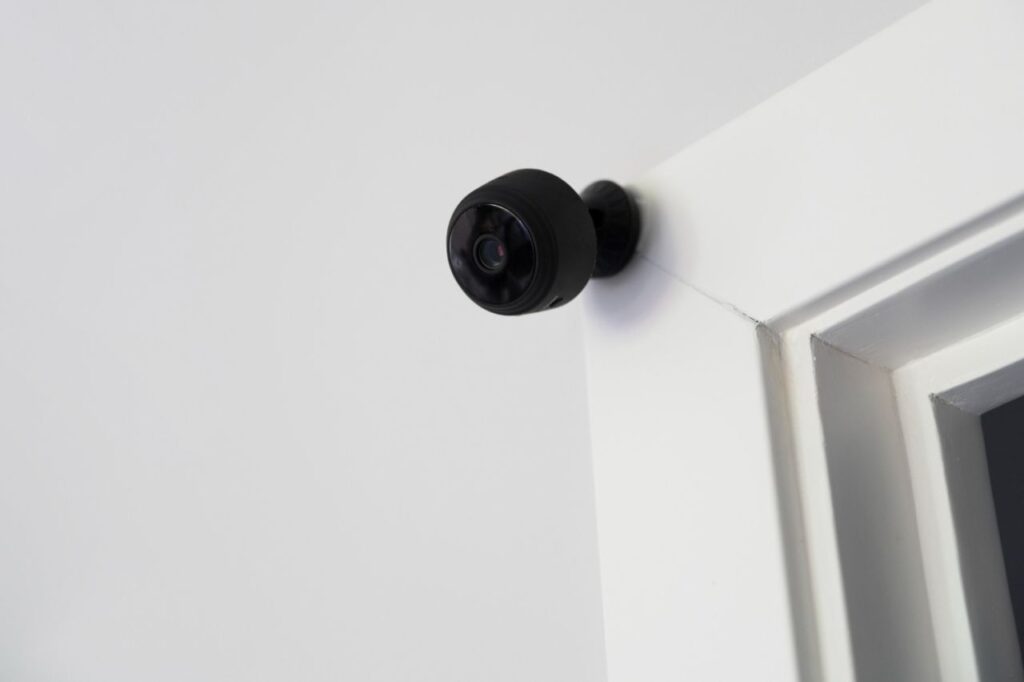
When deciding where to install smart home security components, busy places like lobbies and stairwells should be given preference. The Control app allows you to remotely arm and disarm your security system, as well as stream live video from any linked security devices in your smart home.
Getting home to a dark house is a thing of the past thanks to this handy app that allows you to switch on your lights from afar. In addition, you may make it appear as though someone is home when you're not there.
Wireless Thermostats
One of the numerous benefits of modern smart thermostats is the ability to pre-set temperatures in the home depending on a variety of criteria, such as the time of day, the number of people expected home, and the weather outside. Thermostats that are "smart" can be programmed to turn on and off at specific times, and they can also send you notifications if the temperature in your home suddenly rises or falls too dramatically. Your thermostat also allows you to manage its settings from a distance.
Plug-In Home Security Systems
Using our smart plugs and smart switches, you can transform any standard electrical outlet into a remote intelligence hub, allowing you to talk to a coffee machine that makes itself. Even if you haven't made it to the point of being able to control the lights, you can at least have a conversation with your self-brewing coffee machine. With the use of smart plugs and switches, as well as the Control app, one can make changes to the lighting, such as shutting off the toaster or setting the lights to turn on at a predetermined time every day.
Aspects That Contribute To The "Smartness" Of Home Security Systems
It's natural to wonder what "smart" means in the context of home security systems. All equipment with this designation is guaranteed to be fully autonomous and capable of two-way communication with other machines. Some examples of "smart features" are motion detection, two-way audio/video communication, full 1080p HD video, and voice control.
With the advent of smart home automation, the possibilities for connectivity and personalisation in a smart home's construction have expanded significantly. We understand that you need a security system that is both dependable and flexible enough to meet the needs of your smart home.
This implies that while remote-lock functionality may be a high priority for your neighbour, you may place a higher value on being able to adjust the temperature and lighting in your home while you're not there. In the end, if you pick wisely, smart home security equipment can accommodate your individual needs and preferences.
Advantages of a High-Tech Security System for Your House
Your priority may be safety when making a choice among smart home security systems. But there are a lot of other advantages to these helpful features that you shouldn't forget about. Some illustrations:
- Power to arm and deactivate remotely
- Keep an eye out for any weird goings-on
- Be cautious and watch your children.
- Integration with voice-activated gadgets like Alexa
- A faster turnaround time for emergency circumstances is now possible with the help of constant monitoring services (e.g. fires, floods, etc.)
You may use the same live-streaming cameras to keep tabs on the kids while you're out to dinner and/or to have a two-way conversation with the babysitter.
With the Command smart home security touchpad, you can use your voice to manage compatible smart home systems like LiftMaster, Kwikset, Amazon Alexa, and Z-Wave. Therefore, you can manage and access all of these tools with ease from a unified interface. The touchpad also allows you to manage and incorporate voice control into numerous applications at once. This dashboard was developed using state-of-the-art encryption technology to protect not just your physical possessions but also your sensitive data and information.
Many individuals overlook the fact that dangers to your property could come from either the inside or the outside when they are designing an effective home security system. Fire, carbon monoxide poisoning, and flood prevention software aids in the early identification of invisible dangers like smoke and water. The ability to receive early warnings in the event that any of these occur in your home is crucial.
A panic button, like the Emergency 2-Button Panic, included into a smart home security system allows you to quickly and easily call for help in an emergency. Time is money, and this can buy you some.
Smart Home Security: Where to Begin
When installing a smart security system in your house, it's better to start with the basics and work your way up to the more complex features. If you're looking to build a security system for your smart home, here are a few good places to begin.
Obtain a Wi-Fi Enabled Video Doorbell.
Investing in a feature like a doorbell camera can make your life easier and make you and your loved ones feel safer right away, therefore you should do so.
Start With What You Have and Build From There.
Additionally, consider the gaps in your smart home security setup. Installing simple motion sensors on your windows is a good first step, but you should also consider about doing the same thing on any large doors in your home. Do any of you still leave your homes unattended, such as the back patio or the pool area? More cameras could be necessary if that turns out to be the case. Eventually, you'll have a state-of-the-art home security system in place that's completely seamless with the way of life your loved ones have always enjoyed.
Integration of Alexa with Smart Home Security Devices
Are you concerned about how your voice-controlled gadgets will work with your smart home security systems? Alexa has perfected the art of conversation. By installing a smart home skill, Alexa may become your personal security assistant, allowing you to control your security system with just your voice. The same method allows you to use your voice to move about the app's interface.
Simply teach Alexa a new ability and give her a name for each of the security devices included in your protection package, and she will be ready to work with the rest of your system. Alexa will learn your names, and you can use voice commands to operate even more Amazon products around the house, including Echo Dots, Echo Pluses, Echo Shows, Echo Inputs, and many more. These are all names that Alexa knows. Saying something as simple as "Alexa, turn on the bedroom light" can make operating your smart home security system a breeze.
Concerns About Energy Use in Smart Home Security Devices
After learning about the potential financial and environmental benefits of smart homes, many people begin to consider building one of their own. Home automation can help you save money on utilities and keep more of your paycheck in your pocket by streamlining a number of mundane household tasks.
Do you seek a home security system that can be managed from far away? lighting on/off remote control capabilities? Why not combine your preexisting smart home technology with your home security services? You can accomplish all of these tasks while cutting down on costs and wasting less time. The following are some of the advantages with regards to efficiency and saving money:
- The most accurate temperature regulation is achieved when local weather data is combined with smart thermostats.
- Timing controls for lights that can be set to turn on or off at predetermined intervals.
If you use the energy management plans provided by your smart home security system in conjunction with your typical consumption habits and local weather predictions, you should be able to significantly cut your monthly energy bills. Your thermostat, for instance, may be programmed to lower or raise the temperature at specified intervals. The risk of your pipes freezing in the winter or your dogs overheating in the summer will thus be eliminated.
Energy management schedules take into account the information offered by local weather forecasts, so you don't have to do anything special to keep your home at a pleasant temperature.
Likewise, you may set up your home security system to trigger automated lighting in the room you enter from when you open the door. To further enhance the convenience of your home, you may set the lights in any room to switch on and off at certain times or in response to the presence or absence of people.
Though energy-efficient designs are fantastic for reducing costs, they can improve a lot more than just that. In addition to lowering potential dangers, they raise your standard of living significantly. If you instal a thermostat with automatic lighting, you'll never have to worry about coming home to a dark room or a freezing house.
Smart Home Security Tips: 8 Essentials For A Smarter, Safer Home
Do you want to use technology to make you feel safer in your own home? All it takes to begin safeguarding your world is a decision. It seems very cut and dried, no? Essentially, this is the initial stage. It takes a little more thought and planning to get to the second stage. If you want your home to be safer, smarter, and more connected, how can you do that? The structure's layers are its most vital feature.
You may recall reading about the benefits of employing numerous layers of deterrents in one of our previous posts. Security professionals liken the practise of layering your home's defences to preparing for harsh cold by donning multiple layers of clothing. If you beef up your home's security, would-be burglars are less likely to regard your property as an easy target.
Can You Recommend Us A Good Home Security System?
What kinds of security features do smarter and safer homes have? This is a perfect example of where we may be of assistance, therefore we appreciate you asking for our help. Now, let's take a look at the top eight features that should be a part of any comprehensive smart security system.
Constantly Observing and Reporting Alarm Systems Activity by Trained Professional
Real safety is impossible to achieve without the supervision of experts. However, you will need to be familiar with a few basic ideas before we can explain the significance of alarm monitoring (without getting too techy).
The security systems being monitored are able to communicate with the monitoring facility. The homeowner and the monitoring centre share a lot of information, including alerts, event logs, and emergency alarms. The control panel is the main interface between the homeowner and the monitoring centre. Here's where you'll find the touchscreen or keypad that you'll use to enter your unique code whenever you want to arm or disarm the security system. You can't be in two places at once, no matter how hard you try. As a result, it would be impossible for you to keep a continual eye on your house (or business, or anything else, for that matter).
We'll go into the specific benefits of using motion detection and video surveillance in a bit more detail. But even with the best equipment, you'll only get so far. You will soon find yourself daydreaming or otherwise distracted when you should be paying close attention.
An example is as follows: You're probably at the office right now, taking part in some sort of meeting. This meeting will take so long that you won't even have time to check your phone. At some time, you get a notification on your phone that a window on the first floor of your house is being tampered with. Your brain registers all at once that the notification arrived an hour ago. The intruder has probably already fled the building, and the best you can hope for is a broken window.
Having qualified specialists manage the monitoring of your home security system means that you won't have to worry about informing the appropriate authorities in the event of an emergency. Whether you're at home or across the globe, the monitoring centre will receive a signal from your alarm and respond accordingly.
If a security firm wants to hire competent people to run control rooms, it must make sure they've had adequate training. You can count on them to have your back if something unfortunate were to occur. Find out what kind of monitoring services are provided by a security firm before hiring them. Try your hand at some question-asking:
- Can you rely on their professional monitoring services, or are you on your own to keep tabs on the things they sell?
- Do they own and operate their own monitoring facilities, or does a third party perform this function on their behalf?
- How do they ensure that their staff members take part in training programmes?
- In what ways are they suited for the job, and do they hold any credentials? Verify that their monitoring centres have been awarded both UL certification and the Five Diamond accreditation to ensure they adhere to the highest standards in the industry.
- Do they only have access to a single station, or do they also maintain a secondary facility for emergencies?
You should feel free to grill a security firm as much as you like about their monitoring processes, as this directly impacts the speed and reliability of their responses.
Installing Equipment Expertly
Did you realise that setting up a motion detector in the wrong area might lead to costly false alarms? Likely not, and there's no reason for anyone who isn't in the security industry to care. A professional installation is often disregarded in the security sector. It's been stated before, but it's worth restating: you can succeed on your own. But do you really want to?
It's vital to do things right, and even if they aren't that crucial, they're still worth the effort. You probably wouldn't undertake things like instal your own heating system or stitch yourself up. The same logic should be applied to making sure your health is taken care of. From the selection of the proper hardware and the placement of that gear to the efficiency of the installation itself, a lot of planning and thought is required to ensure full and effective security.
In light of its proximity to the washer and dryer, should we relocate it? Do the gadgets we've chosen require a stronger WiFi signal, or do we have enough bandwidth? Do the cameras and sensors keep an eye on everything that matters to us? A skilled professional installer will think about the aforementioned things and talk through your options with you before arriving on a solution. Leave the stress and hassle to the professionals. You can rest easy knowing that all steps were taken as intended.
Camera Monitoring
Intelligent video monitoring is an indispensable requirement for modern security and one of the most powerful weapons at your disposal. To rephrase, surveillance systems watch out for you when you can't. Having clear vision is crucial for maintaining a peaceful frame of mind.
One of the most important features of smart cameras is the convenience of being able to watch live footage from any location at any time. In addition, you can watch the video your camera has shot on your smartphone using a mobile programme like the Guardian App. You have a lot of options when it comes to cameras, but here are some of the most crucial ones to think about.
Surveillance Cameras for Both Indoor and Outdoor Use
Easy enough to understand, right? The function of one is to record what's going on inside your house, while the other is to document what's happening on the outside. Some security cameras can assist in the investigation of an alarm activation by providing visual evidence. This is in addition to one's capacity to monitor youngsters or pets via cellphone alerts. Choose a camera like this one that can be set to automatically record a clip if a door is opened or your security system is triggered.
Video Intercom
Whether or not the name "video doorbell" is familiar to you, chances are high that you have actually used one at some point. These come in several sizes and shapes, each of which has its own unique characteristics. But in most cases, a video doorbell is just a digital microphone, regular doorbell with a built-in video camera, and speaker.
Guardian's video doorbell, for instance, lets you interact with visitors via two-way audio and video recordings activated by the doorbell, all without leaving the Guardian app. There's a huge range of potential uses, but here are a few examples to tease out before delving more into the topic in another article:
- Determine who is at your door and "answer" it without revealing your absence.
- Find out whether somebody is hanging out near your entrance, and even catch them on camera if they are.
- Learn that a parcel was safely delivered.
As a word of caution, though, not all cameras in this category are created equal. Pick a state-of-the-art camera with the ability to learn on its own, like the one we offer with our Video Analytics tool. Video Analytics employs AI to ensure that you only receive the alerts you care about (such as when your Uber arrives at your driveway) and not the ones you don't (such as when a bluejay lands on your birdfeeder).
Identifying the Presence of Motion
One of the cornerstones of security, motion detection works in tandem with video surveillance to enhance its efficacy. Imagine that in the domain of security, motion detection and video surveillance are the equivalent of the dynamic duo Sherlock Holmes and John Watson. You're absolutely right; they're stronger as a unit.
The purpose of motion detectors is to deter unwanted visitors from entering your home when you're not there. They are used to watch for motion in the rooms of the house over which they have jurisdiction. Unfortunately, they only take up arms when they think you're not looking or when everyone is fast asleep. Every time the sensor is activated, a signal is sent to your control panel and the monitoring facility.
Along with motion sensors, another useful accessory is security contacts, also known as window and door contacts. These should be fastened to any operable external doors or windows and any other potential points of egress. As opposed to motion detectors, these stay activated even when nobody is home.
This expression suggests yet another field in which smart sensors can be useful. These sensitive sensors can be installed on locked cabinets, such as those containing medications or firearms. Here are just a few of the many useful features that motion detection devices can have:
- The system will send a notification to your phone whenever it detects motion.
- Alert you if you suspect a minor is trying to access your liquor cabinet.
- Raise the issue of an open window or door to your attention.
- The sensitivity can be changed so that light-weight dogs are ignored.
In addition, motion detection can function in the absence of cameras, doors, or windows. The motion sensors included in some of our smart home automation solutions might help you save money on your utility bills. This will be discussed in greater depth at a later date.
Even though their functions are different, glass break detectors will be discussed collectively in this section. Intruder alarms can also take the shape of glass shattering. On the other hand, they can pinpoint the sound of shattering glass but cannot detect motion. In case the burglars try to smash the window instead than pry it open, this is crucial.
Measures Against Carbon Monoxide and Fire That Are Constantly Monitored
You're leaving your home vulnerable without monitoring for other dangers like fire and carbon monoxide (CO), if you simply have burglar alarms installed. Monitoring your burglar alarm is crucial.
You probably already have a smoke alarm installed, but is it monitored? Remember that you might only have a few minutes to get out of the building safely once the smoke alarm goes off. Another way of saying this is that a smoke alarm is useless if there is no one around to hear it.
For the sake of argument, let's say that the lengthy work conference you were in caused you to miss a vital warning that alerted you of a fire. In less than thirty seconds, a little flame can spread into a huge fire, and in less than five minutes, it can entirely engulf a house if it is not put out. If you have monitored smoke detectors, the fire department will be notified even if you don't hear the alarm.
For optimal performance in detecting even very high amounts of smoke, choose for monitored photoelectric smoke detectors. Activating these sensors remotely is possible. This alert will assist detect and contain fires, no matter how little, before they spread. Smoke may be a major problem from fires of any magnitude.
Heat detectors are a useful supplement to smoke alarms in high-risk rooms like the kitchen. Heat sensors will alert your security company's central station if the temperature rises above a certain threshold. Remote monitoring is possible with heat detectors. If you're looking for high-quality, affordable home & business video alarm systems, you’re in the right place! Check Defend Security Group.
But what about carbon monoxide? Most people don't give it much thought because it doesn't make any noise and can't be seen. Carbon monoxide poisoning is exceedingly hazardous and kills at least 430 Americans per year, although its early symptoms can be mistaken for those of the common cold or the flu. If it occurs when a person is sleeping, they might not realise anything is wrong until it's too late. A monitored carbon monoxide detector will notify both you and a central station of potentially harmful amounts of CO. If an emergency arises, the monitoring centre can get in touch with the proper authorities on your behalf.
A Fully Integrated Smart Home Automation System
Adding automation to a smart house makes it safer for its inhabitants. The term "home automation devices" refers to those that use WiFi or Z-Wave technology to keep tabs on and manage various components of a home, such as the lights, cameras, and locks. These features can be added to an already existing security system and managed from a central place, such as a mobile device or a computer.
There are so many options for automating your home that it would take a Stephen King novel to list them all. So, instead, here is a brief summary of the ones we think will make a difference when combined with your smart security system:
Keyless Locks
You can secure and open your door from far away with this. You can see who is coming and going at any given time of day, as well as check to see if you locked the door before leaving. Safe, keyless entry can be provided to guests with the help of temporary codes. This eliminates the need for "hidden" keys.
Lighting Control Boards using Smart Technology
It's possible for them to make it look like someone is home even when you aren't. To save energy and keep things looking neat, you may set up your lights to switch on and off at specific times or in response to motion detectors. While you're on vacation, someone is going to come to your house, right? Finally, the darkness must give way to the light.
Programmable Thermostat
This gadget is not necessarily associated with security, yet there is actually a strong link between the two. Our monitored smoke detectors will notify your smart thermostat to shut off the air conditioning in the case of a fire. As a result, the smoke won't be sucked back into the air and spread all over your house. It's convenient to be able to set different temperatures for different times of the day, as this can help you save money on utilities.
- As an added bonus, do you recall our conversation on how motion detection can be used to control the functions of smart homes? The Guardian smart thermostat has motion detection technology that turns off the HVAC system when it detects no one in the room.
Automate Your Garage Door With Your Smartphone
Stop wondering "Did we forget to close the garage door?" for good. These devices allow you to remotely open and close your garage door and will alert you if it has been left open for too long.
Simple, All-In-One Mobile Access
You'd like to manage your house from the ease of your smartphone. That can't be argued. Even if smartphone screens are getting bigger, that's no excuse to cram it with of useless programmes. Have you decided that you wish to
- A remote control for your home security system that you can access from your smartphone.
- A programme that can open and close your garage door when you're not there
- A programme that toggles the on/off state of your lighting
- Using this programme, you may programme your thermostat to automatically
That will go on forever. You're breaking out in itches just thinking about it since it's so overwhelming. When one programme can accomplish all you need it to do plus more, why bother downloading the other nine? Select an organisation that focuses on smart home security and provides a unified app for all of your automation and safety needs. One app can serve as a replacement for many.
Success Requires Experience and Effort
Some companies view security as an afterthought when it comes to growing their services and entering new markets.
For your home's safety, you should hire just a firm that specialises in security. It's preferable to put your faith in someone who has been doing business here for quite some time. This is a business that knows the ins and outs of the products you need, from installation to activating the alarm. In addition, they need to know how alarm response works and which local teams are responsible for answering calls (such as police, firefighters, and emergency medical services personnel, among others).
It is crucial that the employees working at the monitoring stations of a security business be knowledgeable of how things are done in your neighbourhood, as procedures and protocols can differ from place to place.
Keep in mind that it is crucial to never minimise the value of face-to-face communication when talking about human beings. Personal service, together with expertise and reliability, is crucial. When you feel unsafe or terrified, you don't want to be alone, and you need a security service that is staffed by genuine people who value your well-being.
DIY Home Security Systems: How to Get Started
A trustworthy security system can be installed in a single day. DIY home security systems are a great way to ensure the safety of your loved ones and valuables.
Essential Equipment
- four-in-one screwdriver set
- Set of drill bits
- Keyless chuck drill/driver
- Hammer
- A pry bar
- Powerful and versatile wire cutter/stripper
Equipment Necessary
- Safeguarding your home wirelessly
Do-It-Yourself Home Security Systems Can Save a Tonne of Money.
Since the beginning of this century, wireless home security systems have had a terrible reputation for reliability. False alarms were so common that many homeowners gave up using them. Things have changed drastically in that regard. Affordable, reliable, simple, and easy-to-install wireless security technology of professional grade is now available in do-it-yourself home security systems. Do-it-yourself home security systems typically cost between $225 and $800. Putting in wireless smoke and heat detectors will cost you about $1,300 if you decide to do it yourself. That's still significantly cheaper than what you'd pay for the services of a seasoned alarm firm. More than $40 a month could be spent on a monitoring service that alerts authorities such as the police and fire department in the event of an emergency. It's likely you can find it for less than $10/month if you shop around.
Do it yourself home security systems may be planned, built, and functioning in a single day, and we'll show you how to do just that. We'll also show you how to save money on the tools you'll need without sacrificing the quality of your Do-It-Yourself alarm system's finished product. There isn't much to installing a home security system. Transmitters are easily installed by attaching them to doors and windows and hooking up a control panel to an electrical outlet and telephone lines. At that point, a home security system DIY project can be completed with only the barest necessities, including a drill, screwdrivers, a wire remover, and a small pry bar.
Put Away $100 Today and $30 Monthly in Savings.
Installing a wireless DIY home security system is often as easy as hooking a control panel to your existing phone line and attaching transmitters to your doors and windows. You should expect to save $300-$600 on materials and labour expenditures, respectively. Even better, you won't have to sign a pricey, long-term contract with a home security firm to monitor your system. You can pick and choose from many monitoring services to find one that works for you. That will result in a lasting savings of $30 each month.
Transmitters for Windows Versus Motion Detectors
Some alarm installers advise replacing window transmitters with motion sensors. These detectors are analogous to the motion detectors that activate the outside floodlights at night. Although this tactic could help you save money, we do not recommend employing it. Motion detectors are the primary cause of false alerts. Even worse, they can't prevent break-ins and merely alert you to them after the fact. That places you in the precarious position of having to confront a thief as you go down the hall in your own home, which could endanger your life. Door and window transmitters are the only sure means to catch intruders in the act.
Do not believe anyone who tells you that motion detectors are sufficient on their own. Sensors that detect broken glass are also available, although their installation and use are optional. Most thieves will only smash glass if they need access through a locked door or window. After then, any time they open a door or window, a standard transmitter will detect their presence.
Create a Foolproof Do-It-Yourself Security System
To get started, sketch out the entrances and exits on the first floor of your house. If you're installing a DIY home security system, this will tell you how many transmitters you'll need. As you accomplish this, beginning at the main entrance, move clockwise around the building. Include the service door in the garage's construction if you plan on using the garage for parking. That means we should only tally the windows and doors in the top stories that don't require a ladder (burglars rarely use ladders). Finally, remember to add the patio entrance when calculating the total number of steps on a raised deck.
Fire, not burglars, is the greater threat to your home's safety. Consequently, you should think about adding wireless smoke detectors to your security system at a cost of around $90 apiece. This way, if there is a fire, the alarm panel will tell the monitoring service, and the service will then contact the fire department. It's mandatory to put in at least one wireless smoke alarm on every level of your home. Smoke alarms should be placed at the end of each corridor leading to a bedroom and in each bedroom itself. You should put a rate-of-rise (ROR) heat detector on top of all of your gas appliances and connect them to a transmitter. In this way, the safety of your gas appliances can be ensured.
You should then select the control panel layout that works best for you. Two distinct varieties exist: A "cabinet style" control panel consists of a keyboard and circuit board installed in close proximity to the door and the phone interface, respectively. A single, self-contained panel is installed next to the door. The problem with this single-piece panel is that it is more challenging to instal. The panel could be ripped off the wall and removed by an intruder before it has finished alerting the monitoring agency. The two-piece panel design of the circuit board ensures that it will continue to function normally even if the keypad is disconnected. A unique phone jack known as a "RJ31X" is required to connect the panel to your phone lines. This plug works with either flat or curved displays.
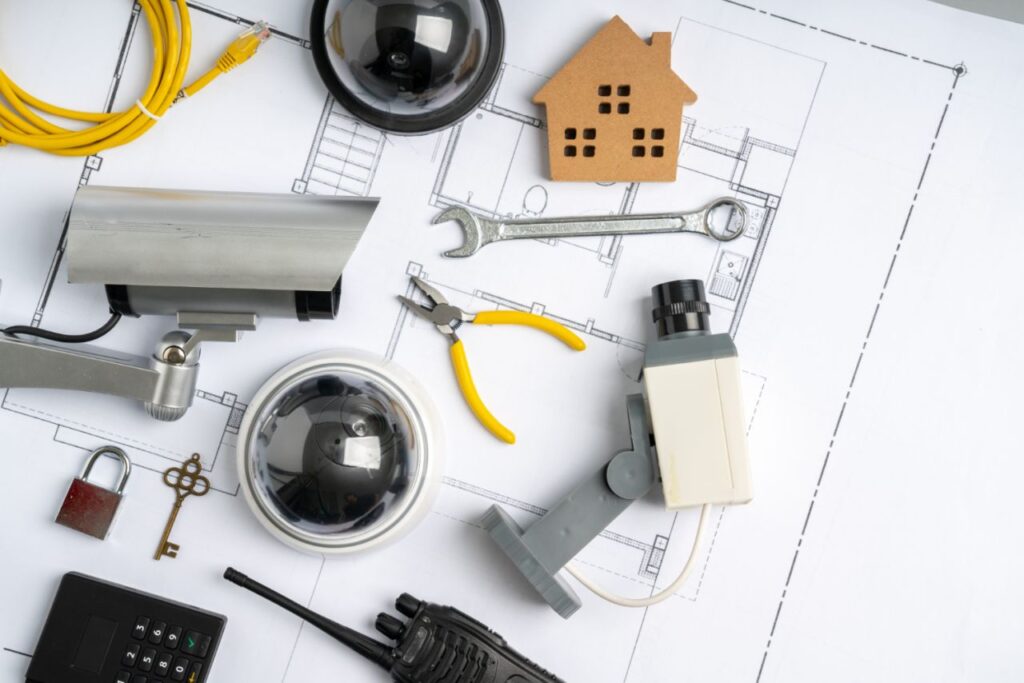
Do It Yourself Home Security: How Does It Stack Up?
When an intruder opens a door or window, the transmitter loses contact with the magnet and transmits a signal to the control panel. When activated, the panel will contact a monitoring service, which will subsequently contact the proper authorities, such as the police or fire departments. The monitoring service can also contact the people you've designated as "initial contacts," in addition to you.
The Permit Must Not Be Forgotten.
A permit for a do-it-yourself alarm system will cost roughly $25 per year in most cities. Install one in a visible location, such as a window or near the door, by obtaining it from your city's licencing office. A fine and a reprimand may be issued the first time you mistakenly trigger the alarm if you don't.
Indulge in Some Internet Shopping
Expert-grade alarm systems aren't sold in your average electronics store. Attempt a new approach by looking for "security alarms" or "security systems" online. Find retailers that offer a wide selection of home security systems to avoid being stuck with a product you don't like. To get the most out of your money, find a vendor who can help you set up your system and answer any questions you may have at no extra cost. Make sure you are not locked into a costly and lengthy monitoring contract with the supplier. Before placing the order, it's a good idea to phone the supplier and talk through your strategy with them. A member of the team will work with you to create a shopping list and adjust the security system's settings as needed. Have someone label the parts for each section.
A Choice of Monitoring Services
DIY security systems don't need to be connected to a monitoring service that alerts the police. It could trigger a basic alarm siren. However, the value of keeping an eye on alerts cannot be overstated. Statistics show that sirens do not dissuade robbers. They know it will take neighbours at least three to five minutes to phone the police and the same amount of time for the cops to arrive. In the event of an emergency, the monitoring service for your home security system can contact the police considerably more swiftly. Due to the importance of faster police and fire reporting, several insurance companies offer discounts to assist defray the expense of monitoring. Thus, you should contact your insurance company.
Companies that sell and instal alarm systems often offer 24-hour monitoring for a minimum of three years for a price of $40 per month. Do-it-yourself security system installation and communicating directly with a monitoring agency can save you at least $360 each year. For more information on alarm monitoring, look it up online. Underwriters Laboratory (UL) lists companies that meet its standards for safety and reliability.
If you've recently made the switch to digital phone service or VoIP, you may want to double check that your monitoring provider is prepared to handle the specifics of these calls. If this isn't possible, it may provide other options for sending and receiving signals, like the Internet, cellphones, satellites, and radio transmitters. Find out how much the supplementary gear will cost, as well as any fees associated with using it.
Put criminals on their heels
Most thieves prefer low-stakes targets where they may make quick and simple gains. Therefore, you need to make sure they know your house is safeguarded by an alarm system. So that no burglar will take your home for granted, advertise its security features by posting yard signs, window stickers, and the alarm permit.
Enjoy the Outdoors — in Safety
The transmitter and magnet should be installed about 6 inches above the sill on double-hung windows. Put in a second magnet, just like the first one but lower on the sash. Doing so will allow you to activate the DIY security system while yet leaving the window cracked open slightly. If the window is opened any more, the alarm will go off to deter a potential intruder.
Magnets placed inconspicuously in casement windows
If your casement windows have plunger connections, they may be more finicky to open and close. Use "recessed" magnetic connections instead. You need only make a hole in the sill of the non-opening window. Draw a line on the sash where you want to make the second hole for the magnet. The next step is to make an angled hole in the side trim. Finally, the wires are "fished" towards the transmitter by hooking them with a bent coat hanger.
Put your best face forward with invisible contacts.
Instead of using unsightly transmitters or magnets, "plunger" contacts can be installed on doors, double-hung windows, and sliding patio doors to provide the same level of protection. The release of pressure from the plunger triggers a simple mechanical switch.
When a door or window is opened, the plunger triggers a second transmitter, which then alerts the central unit. A hole for the wires and a hole for the plunger itself must be drilled into the drywall before the device can be installed. To make the transmitter practically unnoticeable, you can paint it the same colour as the wall.
Talk To One Person About Several Windows
With a single transmitter, you may link all of your plunger and magnetic window contacts in a row. If you have three adjacent windows, you'll save about $60 by doing this. Your overall physical condition will also improve.
Conclusion
Put your mind at ease and reduce your monthly expenses with the installation of a smart home security system. Purchasing "smart" home security equipment may seem like a daunting task to some consumers because they worry it will be too time-consuming or expensive. Smart home security systems allow you to monitor your property from anywhere. Connectivity and customization options for smart home builds have greatly increased since the advent of smart home automation. Any regular electrical outlet can be converted into a remote intelligence hub using our smart plugs and smart switches, allowing you to communicate with a coffee machine that brews itself.
The Command smart home security touchpad enables voice control of LiftMaster, Kwikset, Amazon Alexa, and Z-Wave smart home systems. The touchpad also facilitates multitasking, allowing you to control and manage multiple applications with just your voice. It's possible that Alexa will become your go-to safety assistant. There are more Amazon home products that can be controlled by voice commands. By automating repetitive tasks like turning on the lights in the bedroom, you can save money on utilities and keep more of your hard-earned money in your pocket.
Tips for Smart Home Security: Eight Fundamentals to Make Your House More Secure. The data provided by regional weather forecasts is factored into energy management plans. Having a thermostat that can turn lights on and off automatically takes care of both the cold and the dark. The control panel serves as the primary point of contact between the house and the central monitoring station. There's a touchscreen or keypad there where you can enter your personal passcode.
No need to fret over notifying the proper authorities in the event of an emergency if trained professionals are in charge of monitoring your home security system. Even if something isn't super important, it's still worth your time to do it properly. The success of an installation depends on careful preparation, from the selection of suitable hardware and the positioning of that equipment to the installation's overall efficiency. The footage from some security cameras can be used as evidence during a probe into a false alarm. The only real differences between a regular doorbell and a video doorbell is the addition of a camera and a speaker for audio.
There's a wide variety of applications, but I'll give you a few to think about. The purpose of a motion detector is to keep an eye on the areas of the house that it is installed in. Locked cabinets containing valuable items like medicines or weapons can have sensors installed to prevent unauthorised access. Important as it may be to instal a burglar alarm, keeping an eye on it is essential. Some forms of home automation technology may allow you to reduce your monthly energy costs.
If no one is in the building when the smoke alarm goes off, it serves no purpose. Even if you don't hear your smoke alarm, the fire department will be notified if it is connected to a monitoring system. Extremely dangerous, carbon monoxide poisoning claims the lives of at least 430 Americans every year. Home automation devices are those that use Wi-Fi or Z-Wave network protocols to monitor and control different aspects of a home. These components can be integrated into an existing security setup and controlled remotely via computer or mobile device.
Go with a company that specialises in smart home security and offers a single app to handle all of your automation and safety requirements. Procedures and protocols can vary from one location to the next, so it's important that the people working in the monitoring stations of a security firm are familiar with the norms in your area. You can rest easy knowing that your possessions are safe with a do-it-yourself home security system. Transmitters can be quickly set up by sticking them to your windows and doors. It will cost you about $1,300 to instal wireless smoke and heat detectors yourself.
A door or window transmitter is the only foolproof way to catch a burglar red-handed. Sensors that can detect shattered glass are also offered, though their installation and use are voluntary. Criminals rarely break into a house through an unlocked window or door, preferring instead to smash the glass. The law requires that every floor of your home have a smoke alarm installed. Rate-of-rise (ROR) heat detectors should be installed above all gas appliances. This way, the alarm panel can notify the monitoring service of a fire.
Content Summary
- Put your mind at ease and reduce your monthly expenses with the installation of a smart home security system.
- Purchasing "smart" home security equipment may seem like a daunting task to some consumers because they worry it will be too time-consuming or expensive.
- Planning your home security system ahead of time is easier if you visualise your home as separate rooms.
- You understand, for instance, that smart devices can be useful in tasks such as motion or traffic monitoring.
- Installing security cameras on your windows that are equipped with motion detectors and can automatically record high-definition video will give you a greater sense of safety and security in your home.
- We can help you keep an eye on all the entry points to your home with a variety of cameras, including outdoor cameras with infrared night vision and weather resistance and motion-detecting doorbell cameras with two-way audio.
- When a door is opened or motion is detected, high-resolution, wide-angle cameras can send a text message to your phone or another mobile device of your choice.
- The Control app gives you access to your smart home's security system from anywhere, letting you remotely arm and disarm the system and view live video from any connected security cameras.
- In the future, you won't have to worry about returning to a dark house because of this convenient app that lets you turn on your lights from afar.
- Pre-setting temperatures in the house based on factors like the time of day, the number of people expected home, and the weather outside is just one of the many advantages of modern smart thermostats.
- Any regular electrical outlet can be converted into a remote intelligence hub using our smart plugs and smart switches, allowing you to communicate with a coffee machine that brews itself.
- Not everyone has automated light switches installed, but everyone can strike up a conversation with their coffee maker.
- You can do things like turn off the toaster or schedule the lights to come on at a certain time every day with the help of smart plugs and switches, and the Control app.
- Smart features include motion detection, two-way audio/video communication, full 1080p HD video, and voice control.
- Connectivity and customization options for smart home builds have greatly increased since the advent of smart home automation.
- If you do your research and make an informed decision, smart home security systems can be customised to meet your specific requirements.
- The Command smart home security touchpad enables voice control of LiftMaster, Kwikset, Amazon Alexa, and Z-Wave smart home systems.
- The touchpad also facilitates multitasking, allowing you to control and manage multiple applications with just your voice.
- In case of an emergency, you can quickly and easily summon assistance with the help of a panic button, such as the Emergency 2-Button Panic, which is a part of a smart home security system.
- In the end, you and your family will have a cutting-edge security system for your home that doesn't interfere with the way you've always done things.
- With the help of a home automation skill, Alexa can act as a voice-activated security guard for your property.
- By combining your typical consumption patterns with local weather forecasts and the energy management plans provided by your smart home security system, you should be able to significantly reduce your monthly energy bills.
- In a similar vein, you can programme your home security system to turn on the lights in the room you're entering from automatically.
- While it's true that cost savings are a major perk of adopting an energy-efficient design, there are plenty of other benefits as well.
- Home security experts compare the practise of layering your defences to bundling up against the cold.
- If you take measures to make your home less inviting to burglars, they will be less likely to break in.
- Now, let's examine the top eight components of a smart security system. Communication between the monitored security systems and the monitoring centre is possible.
- The control panel serves as the primary point of contact between the house and the central monitoring station.
- By outsourcing the monitoring of your home security system to trained professionals, you can rest assured that the proper authorities will be notified in the event of an emergency.
- The central station will receive a signal from your alarm regardless of where you are in the world. Before hiring a security company, it is important to find out what kinds of monitoring services they offer.
- In order to ensure they meet or exceed all industry requirements, it is important to make sure their monitoring centres have received both UL certification and the Five Diamond accreditation.
- Probably not, and nobody outside the security industry has any reason to be concerned if they don't have to be. In the field of security, a professionally installed system is often overlooked.
- Using the same reasoning, you should prioritise your health. A lot of planning and thought is needed to ensure full and effective security, from the selection of the proper hardware and the placement of that gear to the efficiency of the installation itself.
- A qualified expert installer will factor in the aforementioned factors, discuss your options with you, and settle on a course of action with your input.
- Watching live footage from any place at any time is a huge time-saver, and it's one of the best things about smart cameras.
- When considering cameras, you have a lot of choices, but here are some of the most important ones to keep in mind. The footage from some security cameras can be used as evidence during a probe into a false alarm.
- The Guardian video doorbell, for instance, enables two-way audio and video recording with visitors without the need to leave the Guardian app.
- Choose a cutting-edge camera that can improve itself through experience, like the one we provide in our Video Analytics software. In order to maximise the effectiveness of video surveillance, motion detection is a crucial component.
- Think of motion detection and video surveillance as the Sherlock Holmes and Dr. Watson of the security world.
- When you're not at home, motion detectors can prevent burglars from breaking in. Security contacts, also known as window and door contacts, are an excellent complement to motion sensors.
- These remain on even when no one is in the house, unlike motion detectors. This idiom alludes to yet another application for smart sensors.
- Installation of these sensitive sensors on locked cabinets is recommended, especially those housing potentially dangerous items like medications or weapons.
- Some of our smart home automation solutions feature motion sensors, which may result in reduced energy consumption and corresponding savings on your utility bills. Although their purposes are distinct, glass break detectors will be discussed in this article.
- Put another way, a smoke alarm serves no purpose if no one is home to hear it. Even if you don't hear your smoke alarm, the fire department will be notified if it is connected to a monitoring system.
- In high-risk areas, like the kitchen, smoke alarms should be supplemented by heat detectors. If dangerous levels of carbon monoxide are detected, you and a central station will be notified.
- In the event of an emergency, the centre will contact the appropriate authorities on your behalf. Automating a smart home improves security for its residents.
- When people talk about "home automation devices," they're referring to gadgets that can monitor and control things like lights, cameras, and locks using wireless networking protocols like WiFi or Z-Wave.
- These components can be integrated into an existing security setup and controlled remotely via computer or mobile device.
- It would take a Stephen King novel to detail all the ways in which you can automate your home.
- Lights can be programmed to turn on and off at certain times or in response to motion detectors to save energy and maintain a tidy environment.



